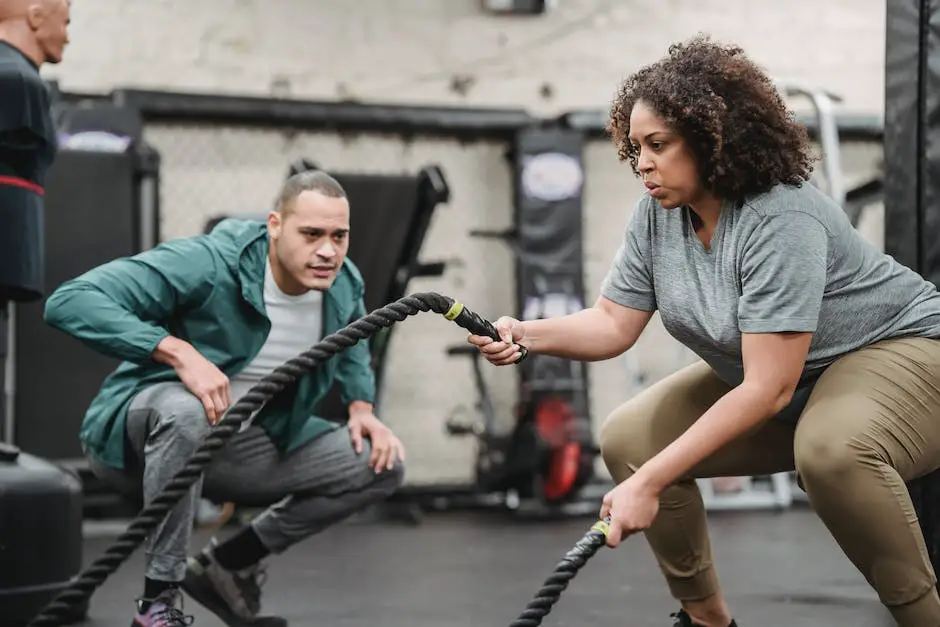Ladies and gentlemen, the moment you’ve all been waiting for has finally arrived! Bask in the glory of your hard-earned six-pack while I unravel the secrets of safe, high-intensity workouts. If you’re looking to torch fat, hit your fitness goals and breeze through a zombie apocalypse, then buckle up, grab your sweatband, and let’s dive into the world of sweaty, heart-pumping, and exhilarating workouts that work! So, are you up for a challenge? Let’s get cracking, my fellow fearless fitness fanatics!
Contents
- 1 – Understanding High-Intensity Workouts and Their Benefits
- 2 – Safety Factors to Consider Before Starting Any High-Intensity Workout
- 3 – Pre-Workout Warm-Up and Stretching Techniques to Prevent Injuries
- 4 – High-Intensity Workouts: Choosing the Right Exercises and Equipment for You
- 5 – Post-Workout Recovery Practices to Promote Optimal Results and Wellness
- 6 Final Thoughts: Don’t be a Hero
– Understanding High-Intensity Workouts and Their Benefits
If you’re one of those people who wants to sweat out their body weight in an hour, then welcome to the world of high-intensity workouts! HIIT, Tabata, CrossFit, and everything in between, are all part of the club. So, let’s cut the chit-chat and explore what the fuss is all about, shall we?
First and foremost, high-intensity workouts are trendy because they’re the epitome of ‘less is more.’ I mean, who wants to spend an hour on the treadmill, when you can burn the same amount of calories in 20 minutes of HIIT? That’s right; you read it right. Short and sweet!
Secondly, these workouts are fantastic stress-busters. I mean, when you’re gasping for breath after completing burpees, or you’ve pushed that one last rep on the squat, it can feel like all your problems have evaporated into thin air. In other words, high-intensity workouts are not just great for your body, but they’re also fantastic for your mind.
Last but not least, high-intensity workouts can do wonders for your metabolism. You see, because these workouts are so intense, they create something called afterburn, which means that you’ll continue burning calories even after you’re done exercising. In other words, it’s like you’re getting paid to not work out. Talk about being efficient, right? So ditch the slow and steady mindset and join the HIIT bandwagon right away!
– Safety Factors to Consider Before Starting Any High-Intensity Workout
So you’ve decided to pump up the intensity of your workouts! Great decision! Before you start though, there are some safety factors you need to consider. Trust me, you don’t want to end up in a hospital bed because you didn’t take precautions.
First things first – listen to your body. Your body communicates with you in the language of aches and pains. If you feel any discomfort or twinges of pain, don’t ignore them thinking you’ll just power through. You’re a human being, not a machine. So be gentle on yourself!
Another safety factor to consider is staying hydrated. Water is essential for recovery and to keep your body functioning properly. And there is no quicker way to stop the momentum of your high-intensity workout than dehydration. So don’t let thirst win, stock up on fluids!
Also, it’s best to not work out before zoning out to your favorite TV shows. High-intensity workouts deserve your complete attention. Save your Glee marathons for later. Focus on your form and your breathing. You may end up looking funny, but hey, nobody looks cool while sweating profusely anyways.
In conclusion, safety should always come first when it comes to high-intensity workouts. Take care of yourself and listen to your body. Stay hydrated, be focused, and most importantly, have fun while training hard. Lift smart, live better!
– Pre-Workout Warm-Up and Stretching Techniques to Prevent Injuries
Are you one of those people that show up to the gym with reckless abandon and hit the weights hard without breaking a sweat? Well, my friend, let me tell you – you’re playing a dangerous game. Skipping out on pre-workout warm-up and stretching techniques are just begging for an injury to happen. Lucky for you, I’ve got a few tips to prevent that from happening.
First things first, start out slow. Get your muscles moving and warm by starting with a 5-10 minute low-intensity cardio workout. Hit the treadmill or elliptical and work up a mild sweat. Not only will this get your heart pumping and body moving, but it’ll also help lubricate your joints before hitting the weights. Trust me, your body will thank you.
Next, stretch it out. No, I’m not talking about the lazy, half-hearted stretch where you barely move for a few seconds before calling it a day. I’m talking about a deep, full-body stretch that will get your blood pumping and reduce the risk of injury. Here are a few stretches to get you started:
- Hamstring stretch: Sit on the floor, extend your legs out in front of you, and reach for your toes.
- Quad stretch: Grab onto your foot behind you and gently pull it towards your butt.
- Shoulder stretch: Clasp your hands behind your back and gently lift upwards, feeling the stretch in your shoulders and chest.
So there you have it, folks. A few simple pre-workout warm-up and stretching techniques to prevent injuries. Don’t be that person who struts into the gym with a cocky attitude, only to leave with a pulled muscle. Take the time to properly warm up and stretch – your body will thank you.
– High-Intensity Workouts: Choosing the Right Exercises and Equipment for You
Are you tired of slogging away on the treadmill for hours on end, only to see minimal results? It’s time to spice up your exercise routine and incorporate some high-intensity workouts. But before you jump in feet first, it’s important to choose the right exercises and equipment for you. Here’s some advice to get you started.
First things first, make sure you’re dressed appropriately for your high-intensity workout. Say goodbye to your old, ratty t-shirts and gym shorts – it’s time to invest in some moisture-wicking activewear. Bonus points if you can find a pair of leggings with pockets big enough to hold your phone and a snack. You never know when you might need to Instagram your sweat session or refuel with a granola bar mid-workout.
When it comes to choosing high-intensity exercises, the possibilities are endless. But if you’re new to this style of workout, it’s best to start with some tried-and-true moves. Think burpees, jump squats, and mountain climbers. These exercises will get your heart rate up and work multiple muscle groups at once. And if you need some extra motivation, throw on your favorite power ballad and imagine yourself as Rocky Balboa running up those stairs.
As for equipment, there are endless options to choose from. From battle ropes to kettlebells, it can be overwhelming to decide where to invest your hard-earned cash. One piece of equipment that’s always a winner? Resistance bands. They’re lightweight, easy to pack, and can be used for a variety of exercises. Plus, there’s something satisfying about feeling the burn without the added weight of traditional dumbbells. So grab your resistance band and get ready to sweat – your muscles will thank you later.
– Post-Workout Recovery Practices to Promote Optimal Results and Wellness
Who doesn’t love the feeling of a great workout? Pumping iron or doing some cardio can help us achieve our fitness goals and make us feel good. But what happens after the workout is what matters the most. Recovery time is essential for our bodies to repair and grow stronger. Here are some post-workout recovery practices to promote optimal results and wellness:
1. Stretch it out and thank your muscles
After a strenuous workout, our muscles are tense, and lactic acid accumulates, contributing to sore muscles. Stretching after every workout session helps loosen up tight muscles, increase flexibility and reduce the risk of injuries. So, grab your mat, and show your body some love.
2. Refuel with some healthy snacks
Right after a workout, our bodies need that much-needed refuel to replenish glycogen levels and repair the micro-tears in the muscles. So, skip the Doritos and opt for some healthy snacks rich in protein and carbohydrates. Here are some quick options: Greek yogurt, hummus, fruits, nuts, and veggies.
3. Rest and bingewatch some Netflix
Your body needs rest and sleep to repair, regenerate, and become stronger. So, grab your comfy pajamas, your favorite blanket, and indulge in some quality binge-watching. And, hey, if anybody asks, tell them it’s just part of your post-workout recovery routine.
Final Thoughts: Don’t be a Hero
Well, folks. It’s been a wild ride. We’ve talked about safe high-intensity workouts, and now it’s time to say goodbye. Remember, when it comes to fitness, you don’t have to be a hero. Leave the cape-wearing to Superman and focus on what works for you. Whether it’s a high-intensity interval or a low-impact yoga flow, the key is to move your body in a way that feels good. So, go forth and sweat, my friends. And don’t forget to hydrate. Cheers to healthy hearts and strong quads!








Leave A Comment